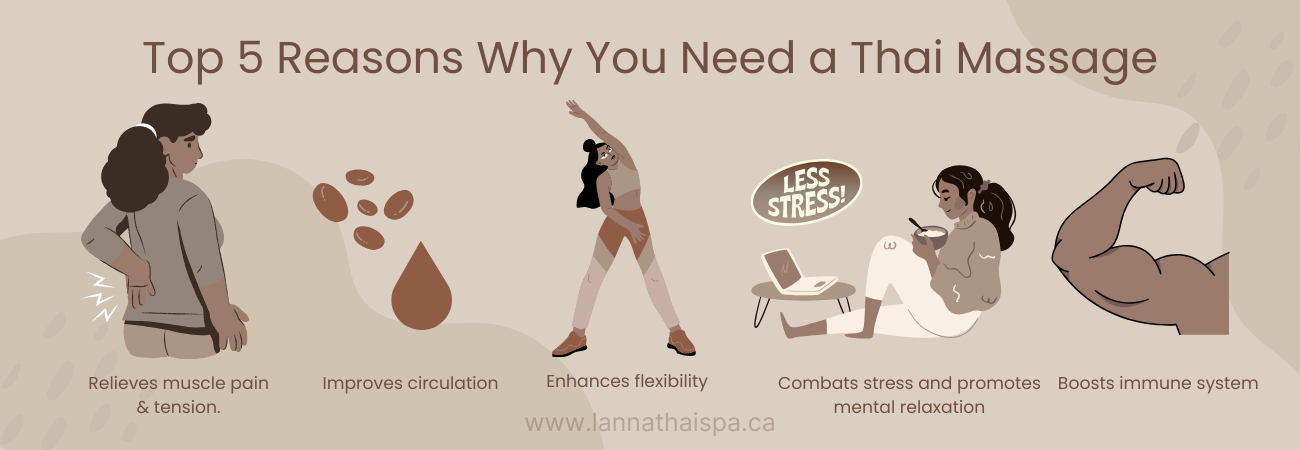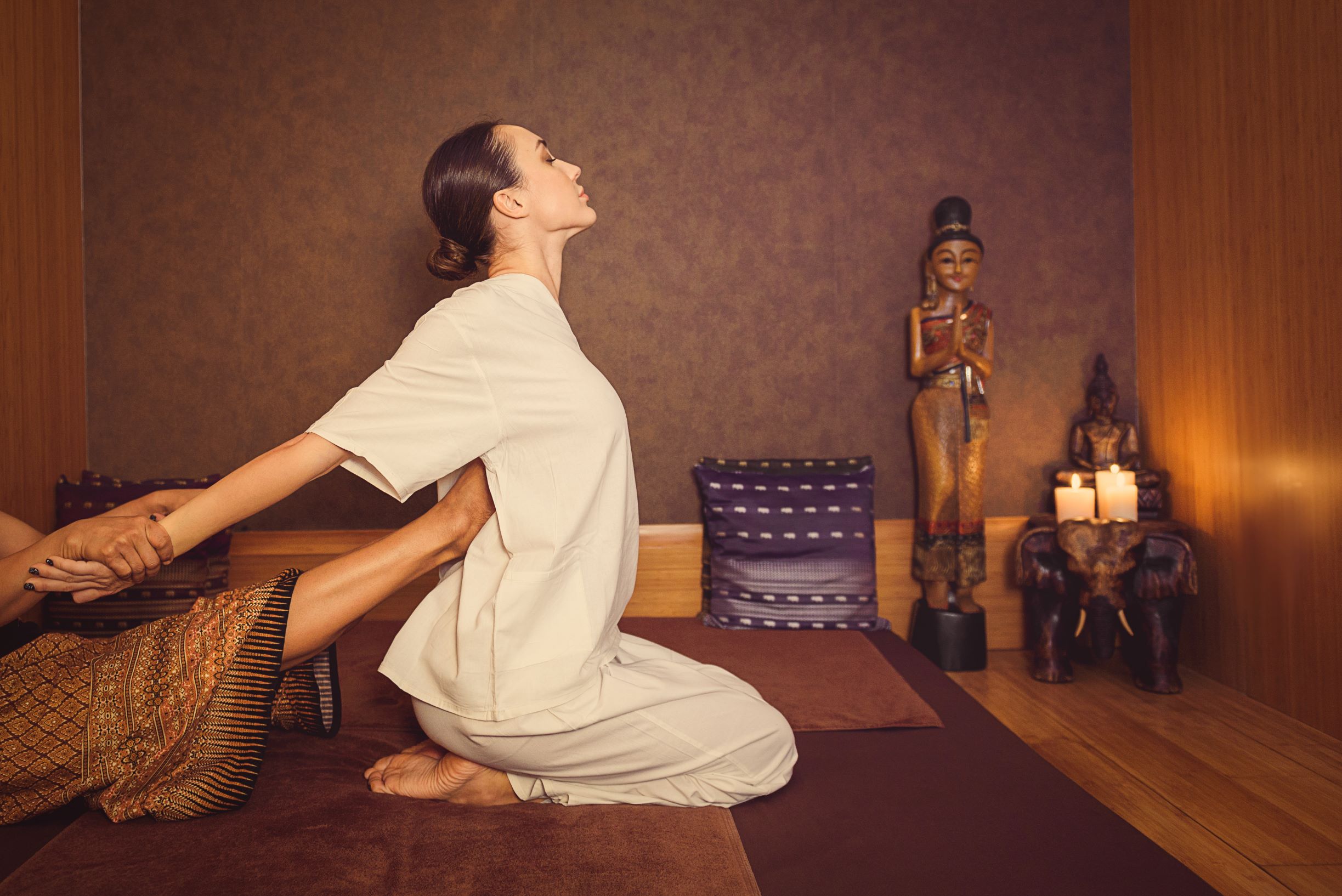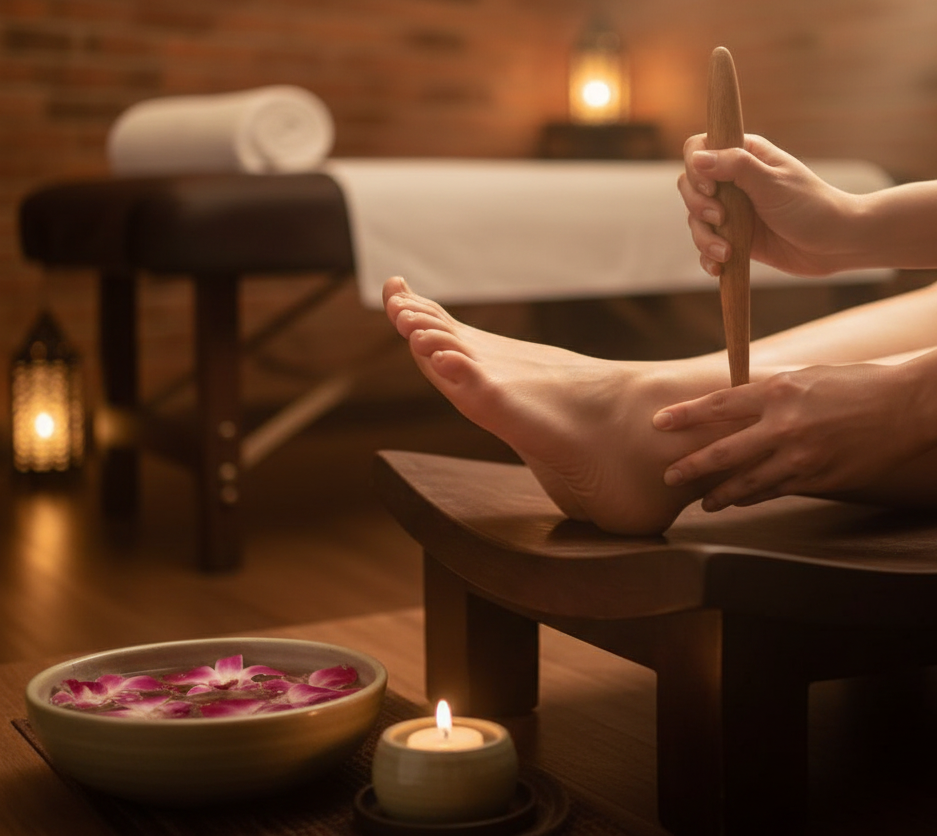Photo Credit to www.spafinder.com
Since experiencing a global pandemic, people have started to focus more on their health and overall well-being. The demand for wellness products and services has skyrocketed over recent years, including spa services. More and more people are discovering the physical and mental benefits of getting a massage, particularly a thai massage, that’s why it’s no surprise that “thai massage near me” is searched by so many.
But what is a thai massage exactly? Let’s discuss the basics of a Thai massage, including its techniques, benefits, and what you should expect from your first massage session.
What is a Thai Massage?
Thai massage is a traditional healing practice that originated in Thailand. Also called Thai yoga massage or Thai bodywork, it is a combination of acupressure, assisted yoga postures, and deep stretching meant to promote relaxation, relieve muscular tension, and improve flexibility.
The practice is believed to have been founded by doctor and physician Jivaka Komarabhacca over 2500 years ago. Dr. Jivaka, also known as the “Father Doctor” or “Father of Medicine”, was the personal physician to the king of India and a personal friend of Buddha. Dr. Jivaka’s massage technique became an integral part of Buddhism and eventually spread throughout Thailand. After the Thai Massage Revival Project in 1985, the practice spread to USA and to the rest of the world.
Today, it is still customary to pray to the doctor for guidance and inspiration before or after starting a massage treatment. This prayer is called Wai Khru which is still frequently carried out in Thailand today.
Understanding Sen and Pressure Points
According to registered nurse and licensed massage therapist DeBorah Hill, Thai massage is an ancient form of healing and is a combination of passive stretching and yoga poses rooted in Ayurvedic and Chinese medicine practices. Therefore, understanding the Sen and pressure points involved in the practice is fundamental.
Sen, known to be “energy lines” in Thai, refers to pathways found in the body through which life energy flows. These lines are believed to play a vital role in maintaining both physical and emotional health. Experts believe that there are over 70,000 Sen lines in the body, each of which corresponds to various organs and systems in the body, allowing for targeted therapeutic effects.
When a skilled massage practitioner applies pressure (either using a finger, palm, forearm, elbow, knee, or foot) to specific Sen points, it can remove blockages, promote relaxation, and restore balance to the body’s energy flow. Sen is also seen as “rivers of energy” comprising major and minor chakras (energy centers). Major energy centers can be found along the body’s centerline while minor energy centers are found all over the body. The pressure points in Thai massage are minor chakras.
Thai Massage Techniques
Stretching
Stretching is a key component of Thai massage. Therapists typically combine gentle rocking motions and rhythmic stretching techniques that target various muscle groups throughout the body which helps elongate the body, release tension, promote relaxation, and improve flexibility.
Compression
Therapists use their thumbs, hands, elbows, or feet to apply pressure along the body’s Sen (energy lines) which is called compression. This technique is typically used in conjunction with stretching to help alleviate muscle tension, stimulate blood flow, and even release toxins trapped within the muscles.
Joint Mobilization
Joint mobilization focuses on manipulating and mobilizing joints in the body through passive movement. This helps relieve muscle stiffness, alleviate joint pain, improve range of motion, increase flexibility, and enhance overall mobility. Those with arthritis or restricted joint movement will particularly benefit from this Thai massage technique.
Top 5 Reasons Why You Need a Thai Massage
Anyone can benefit from getting a Thai massage. If you’re unsure about getting one, perhaps these reasons will convince you!
Relieves muscle pain and tension: Therapists will apply deep pressure to your Sen lines which is effective for alleviating muscle pain and releasing tension. If you suffer from soreness, stiffness, or chronic pain, you can benefit from a Thai massage session.
Improves circulation: The compression and stretching techniques used in Thai massage promote blood flow throughout the body. In turn, circulation is improved and oxygen and other vital nutrients are efficiently delivered to the tissues.
Enhances flexibility: The combination of stretching and joint mobilization techniques used in Thai massage, one can significantly improve their flexibility and range of motion. Athletes or those with stiff muscles or mobility issues can benefit from a Thai massage.
Combats stress and promotes mental relaxation: Having a Thai massage in a relaxing environment can instantly boost your mood. The focused pressure and rhythmic movements help calm the nervous system, therefore reducing stress levels and promoting mental relaxation.
Boosts immune system: Since a Thai massage session helps improve circulation and reduce stress, you feel relaxed, recharged, and revitalized afterward. Regular sessions can help boost the immune system and improve your overall well-being.

What to Expect During a Thai Massage Session
Once you’ve scheduled a Thai massage, here’s a quick overview of what you can expect for your session.
Preparation
Arrive for your appointment at least 10 minutes before. You may be asked to change into loose clothing provided by the spa, but still come to your appointment wearing your most comfortable clothes, preferably without jewelry and other accessories. It’s also ideal that you put away your gadgets and other valuables before your session starts.
Thai Massage Environment and Ambiance
You can expect to have your session in a quiet and relaxing environment, typically with soft lighting and soothing music. Depending on the spa, your massage may be conducted on a massage table or on a padded mat on the floor.
Communicating with Your Therapist
Communication is key during a Thai massage. Before your session begins, you can talk to your therapist about areas of tension or discomfort so that he/she can focus on them. You may also relay your desired pressure level. Don’t hesitate to let your therapist know if you find something painful or uncomfortable during the massage.
Duration
Thai massage sessions typically last between 60 to 90 minutes. Most spas offer packages for fixed durations, but you can talk to your therapist if you want to extend your session.
If you’re feeling anxious, tense, or stressed, a rejuvenating Thai massage is all you need. So stop searching “Thai massage near me” and just go ahead and book a session – you’ll be thankful you did!



